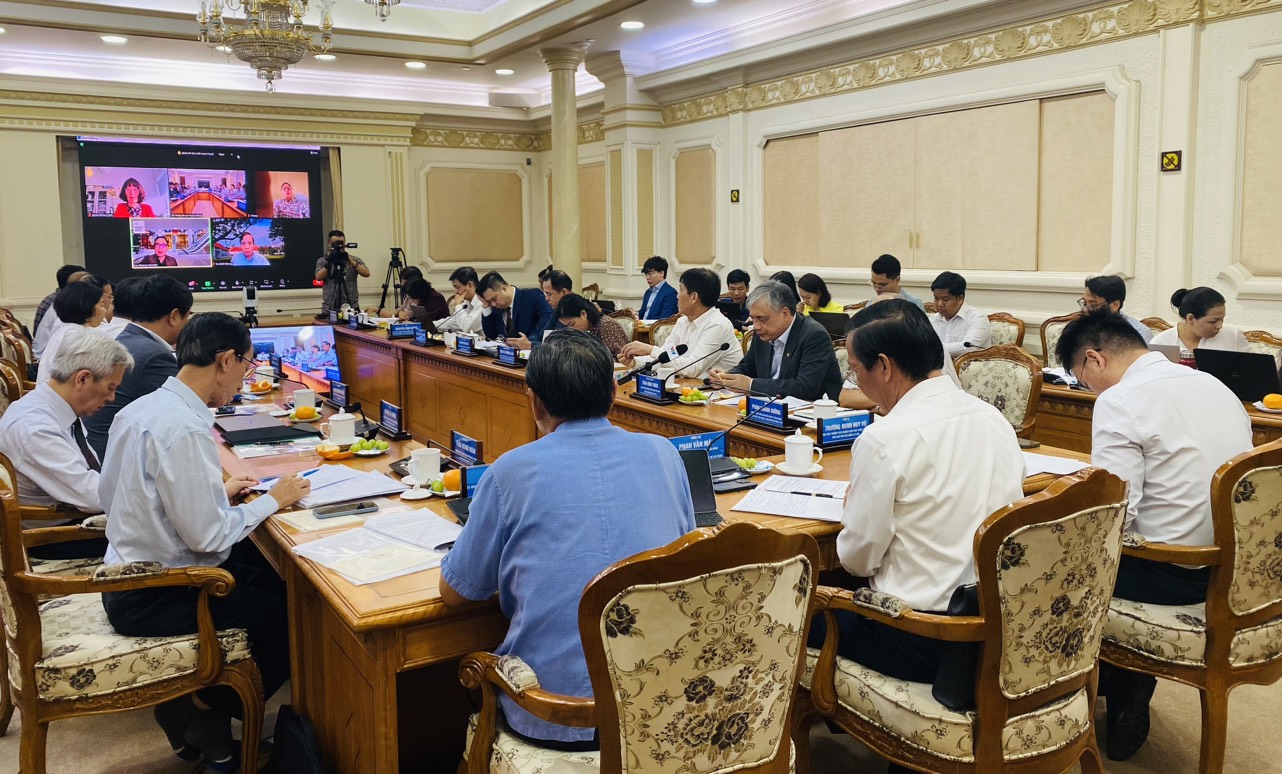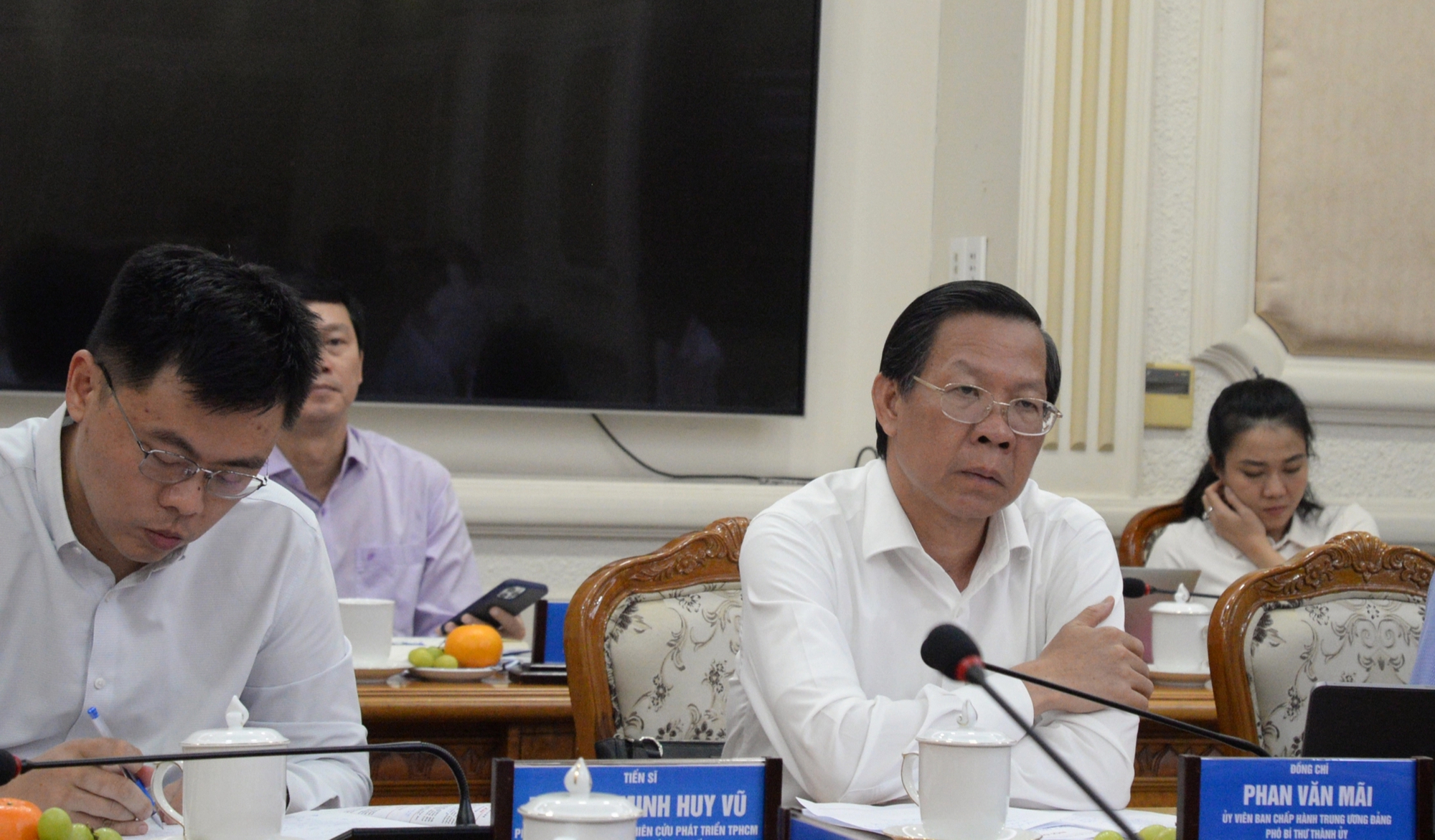On February 16, chairman of the People’s Committee of Ho Chi Minh City, Phan Van Mai, chaired a meeting of the advisory council to implement Resolution 98/2023 of the National Assembly on piloting some mechanisms and policies for the special development of the city; and the Expert Advisory Board for the construction and development of the urban railway system.
Clearance payment before construction
During the meeting, Dr. Architect Ngo Viet Nam Son proposed and opened up various issues for Ho Chi Minh City to complete the 220km urban railway system (metro) by 2035 in accordance with Conclusion 49/2023 of the Politburo.

Quang cảnh cuộc họp sáng 16-2 (Scene from the meeting on February 16)
“Completing the 220km urban railway by 2035 is a challenging task. Therefore, a different mindset and approach are needed,” said Son.
Based on this approach, Son believes that building the urban railway requires a multidisciplinary combination involving many issues beyond the scope of the Urban Railway Management Board of Ho Chi Minh City, such as planning, land clearance, and compensation…
Son proposed the establishment of a Metro and TOD (Transit-Oriented Development) Group as a joint-stock company. The first component is the relevant departments and agencies; the Ho Chi Minh City People’s Committee serves as the conductor and has the highest stake in the Group, coordinating the synchronization of departments and agencies.

TSKH, KTS Ngo Viet Nam Son proposed the establishment of a Metro and TOD Group as a joint-stock company
In terms of approach, Son believes that it is necessary to adopt a multidisciplinary mindset rather than a single-discipline mindset. Relevant departments and agencies should participate, and after the project plan is finalized, they will be the ones to implement it.
Especially for land clearance, construction can only commence after compensation is completed. Initiating construction without completing compensation poses severe difficulties in addressing compensation because land prices will increase each day and each hour. The time for land clearance, compensation, and resettlement will be prolonged, significantly affecting the project schedule.
“Ho Chi Minh City is playing a significant game, so caution is necessary, and playing means winning,” said Son.
In addition, Son also proposed the establishment of a coordinating committee for the metro system because Resolution 98 has given power, and the central government also supports Ho Chi Minh City in implementing this approach, which is the first in the country. The committee must include the Department of Transport, the Urban Railway Management Board, and the Department of Planning and Architecture because TOD varies depending on the metro line and the location for determining and planning.
On the other hand, Dr. Vu Minh Khuong suggested the formation of an action coalition for the metro system. This coalition would consist of Ho Chi Minh City, Hanoi, central ministries and departments, experts, investors… It would amass the best talent from across the country.
Researching the establishment of the Metro and TOD Group
Listening to the opinions of experts, Chairman Phan Van Mai of the People’s Committee of Ho Chi Minh City emphasized that not only urban railways but also other issues of the city should take a multidisciplinary approach. The People’s Committee of the city directs comprehensive access to issues in line with the goal of sustainable development and placing people at the center.
That is why Ho Chi Minh City has established many directive boards and working groups because a single department cannot solve the problem.

Chairman Phan Van Mai chaired the meeting
In specific terms of the metro system project, the Chairman of the People’s Committee said that a multidisciplinary approach has been adopted from the beginning, with the Urban Railway Management Board in a permanent role and relevant departments and agencies coordinating under the guidance and management of the People’s Committee of Ho Chi Minh City.
The Chairman of the Committee stated that he would continue to improve this issue. The Committee will review the plan to clarify the inter-departmental responsibilities, ensuring the synchronization of work processes to avoid difficulties arising from incompleteness.
Regarding TOD, the city has also established a multidisciplinary group with the Chairman of the People’s Committee as its head.
Regarding the proposal to establish the Metro and TOD Group, the Chairman of the People’s Committee said that further research would be conducted.
“I understand the experts’ opinion, which is that departments, agencies, and other parties involved in the project must participate from the beginning, have their say, and assume responsibility throughout the project,” the Chairman of the People’s Committee shared, adding that when the Metro and TOD Group would be established, in which stage, the city would study further.
Currently, Ho Chi Minh City has planned eight metro lines and three overhead electric or single-rail lines totaling 220km in length, with an estimated investment capital of about $25 billion. Among them, lines No.1 (Ben Thanh – Suoi Tien) and No.2 (Ben Thanh – Tham Luong) have been deployed, while the remaining lines have not been invested in yet.












